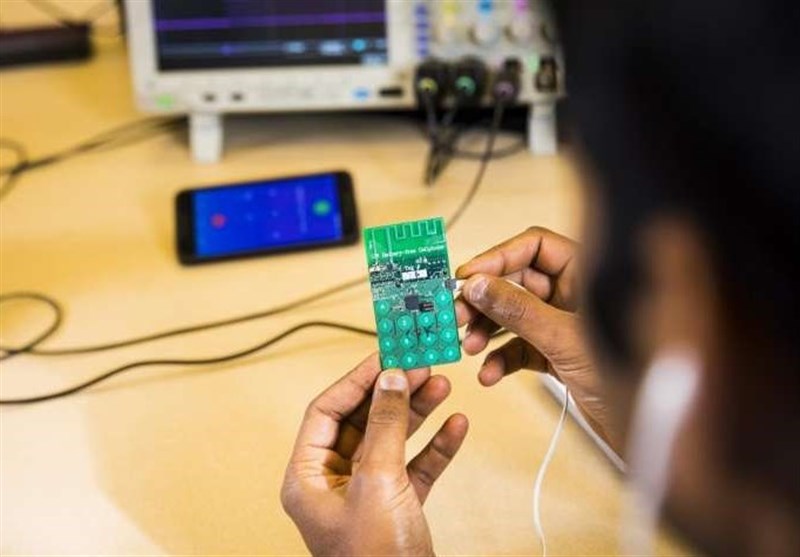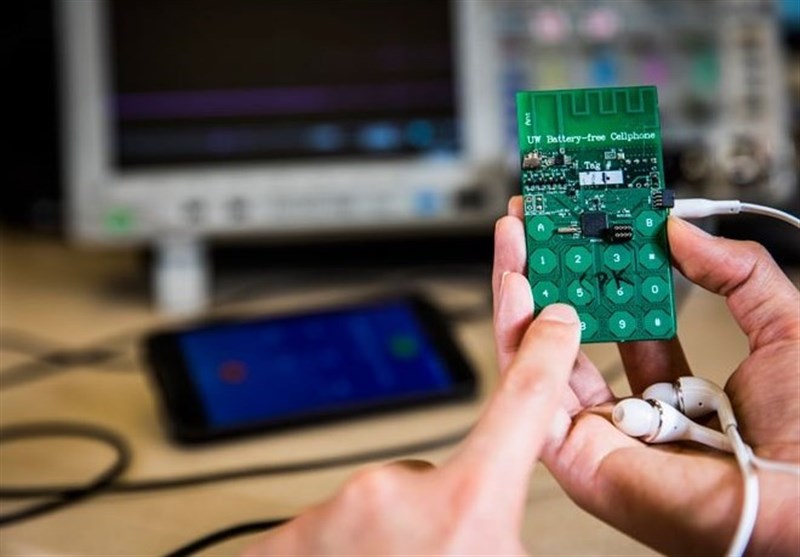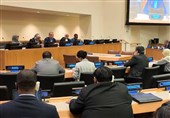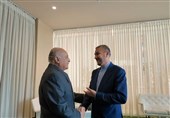Battery-Free Cellphone Uses Ambient Power
TEHRAN (Tasnim) - University of Washington researchers have invented a cellphone that requires no batteries -a major leap forward in moving beyond chargers, cords and dying phones.
Instead, the phone harvests the few microwatts of power it requires from either ambient radio signals or light.
The team has also made Skype calls using its battery-free phone, demonstrating that the prototype made of commercial, off-the-shelf components can receive and transmit speech and communicate with a base station.
The new technology is detailed in a paper published in the Proceedings of the Association for Computing Machinery on Interactive, Mobile, Wearable and Ubiquitous Technologies.
"We've built what we believe is the first functioning cellphone that consumes almost zero power," said co-author Shyam Gollakota. "To achieve the really, really low power consumption that you need to run a phone by harvesting energy from the environment, we had to fundamentally rethink how these devices are designed."

The team of UW computer scientists and electrical engineers eliminated a power-hungry step in most modern cellular transmissions -converting analog signals that convey sound into digital data that a phone can understand. This process consumes so much energy that it has been impossible to design a phone that can rely on ambient power sources.
Instead, the battery-free cellphone takes advantage of tiny vibrations in a phone's microphone or speaker that occur when a person is talking into a phone or listening to a call.
An antenna connected to those components converts that motion into changes in standard analog radio signal emitted by a cellular base station. This process essentially encodes speech patterns in reflected radio signals in a way that uses almost no power.

To transmit speech, the phone uses vibrations from the device's microphone to encode speech patterns in the reflected signals. To receive speech, it converts encoded radio signals into sound vibrations that that are picked up by the phone's speaker. In the prototype device, the user presses a button to switch between these two "transmitting" and "listening" modes.
Using off-the-shelf components on a printed circuit board, the team demonstrated that the prototype can perform basic phone functions -transmitting speech and data and receiving user input via buttons. Using Skype, researchers were able to receive incoming calls, dial out and place callers on hold with the battery-free phone.
The battery-free phone does still require a small amount of energy to perform some operations. The prototype has a power budget of 3.5 microwatts.
The UW researchers demonstrated how to harvest this small amount of energy from two different sources. The battery-free phone prototype can operate on power gathered from ambient radio signals transmitted by a base station up to 31 feet away.

Using power harvested from ambient light with a tiny solar cell -roughly the size of a grain of rice- the device was able to communicate with a base station that was 50 feet away.
Next, the research team plans to focus on improving the battery-free phone's operating range and encrypting conversations to make them secure. The team is also working to stream video over a battery-free cellphone and add a visual display feature to the phone using low-power E-ink screens.




